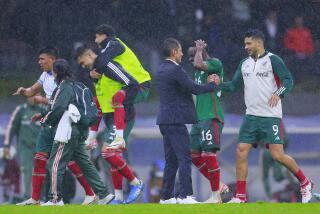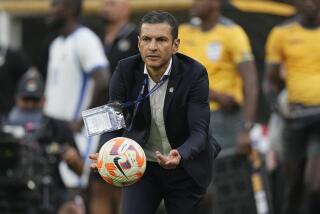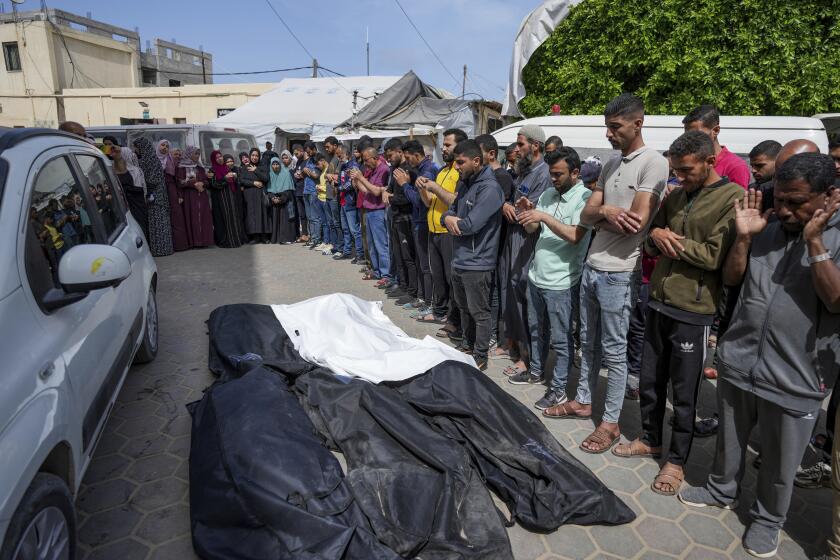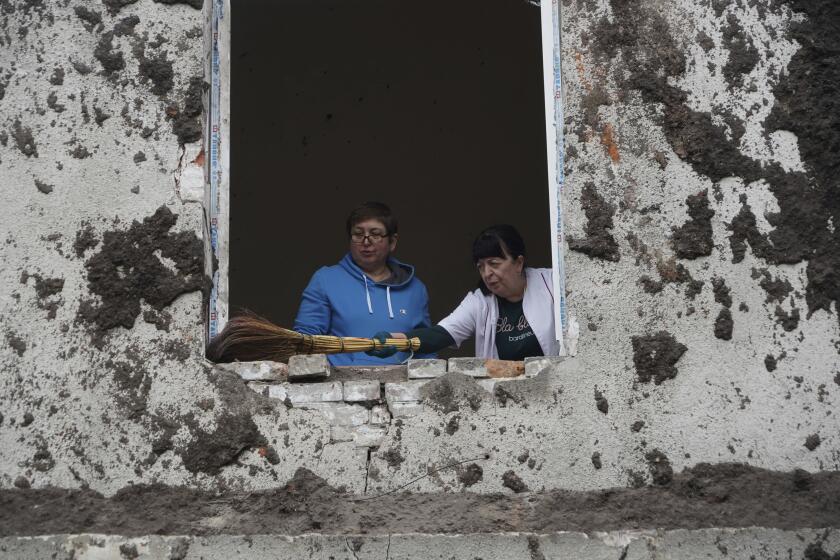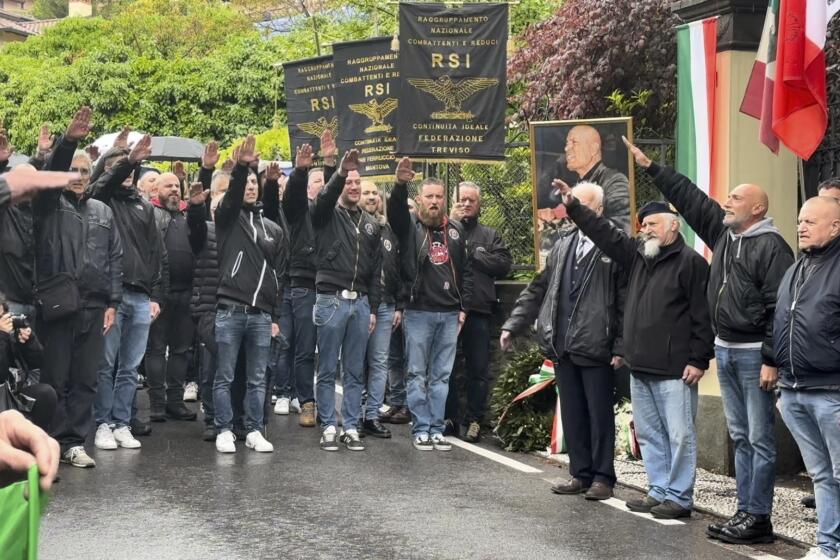Mexico steps up security as host of Pan Am Games
When athletes from across the Americas take to playing fields and swimming pools in Mexico this month, they’ll be guarded by unmanned drones, infrared-equipped Black Hawk helicopters, hundreds of surveillance cameras and more than 11,000 police officers.
It’s the first time since 1975 that Mexico is hosting the Pan American Games — a major multi-sport event held every four years — and the stakes are high, as the games play out amid a nearly 5-year-old drug war that keeps setting new thresholds for shocking violence.
About 6,000 athletes from 42 countries will take part in the two-week event, which opens Friday with festivities in the host city of Guadalajara, Mexico’s second-largest. Sports events will also be held in four other cities in the same state, Jalisco.
Although vigilance is always heightened around international sports events, the specter of possible violence in Mexico has thrust security to the forefront of planning for the games. Nationwide, more than 40,000 people have died in drug violence since President Felipe Calderon launched a military-led crackdown on traffickers in late 2006.
Guadalajara, a colonial-era city known as the birthplace of mariachi and tequila, is not among the main hot spots for drug violence. But in the last two years, the number of killings has risen in the metropolitan region, with 4.4 million residents, as several drug-trafficking organizations have battled one another in a messy struggle for supremacy in western Mexico.
One of Mexico’s most-wanted drug kingpins, Ignacio “Nacho” Coronel, was killed by Mexican troops last year during a raid outside Guadalajara, in the upscale suburb of Zapopan. Since then, turf fighting has rocked Jalisco, with nearly 600 dead last year, more than double the toll in 2009.
Against that backdrop, Guadalajara residents and Mexican officials are hoping that the showcase sports event — the biggest in Mexico since the 1986 World Cup — is peaceful.
“Right now this is the safest city in Mexico and many other places in Latin America,” Guadalajara Mayor Aristoteles Sandoval said this week in a welcome to arriving teams.
Not everyone is so sure. A headline on an editorial last month in the weekly newspaper of the Archdiocese of Guadalajara sounded like a plea: “A Pan American truce.” The newspaper said that though “statements by our officials should comfort us, worry remains.”
None of the drug-trafficking organizations jousting for dominance in Jalisco has made threats against the games, expected to draw 1 million spectators.
Mexico has hosted a number of other marquee events — including an international climate-change summit, film festivals and other athletic tournaments — during the last few years without a hitch.
“There’s not a whole lot of incentive for the cartels to create any sort of major mayhem aimed at athletes and spectators,” said Scott Stewart, a vice president of Stratfor, an Austin, Texas-based intelligence firm. “They try to do things, for the most part, that are good for business. There’s not a business reason to kill athletes and spectators.”
But the huge media presence in Guadalajara could provide a means for traffickers to try to send a message to rivals, such as by dumping bodies in public places. That’s what happened in Acapulco last spring when a visit by Calderon drew press attention, Stewart said.
A 2008 grenade attack by suspected cartel hit men killed eight people during an Independence Day event in the western state of Michoacan.
In August, thousands of panicked soccer fans and players fled from a professional soccer game in northern Mexico after gunmen opened fire on police outside the stadium. No one inside was hurt, but televised images of the scene, in the city of Torreon, further rattled a nation that has seen escalating drug-war bloodshed.
The Calderon administration took the unusual step this week of sending federal police to patrol by air and on the ground outside the same Torreon stadium when Mexico played Brazil in a soccer match unrelated to the Pan American Games. No shots were fired, and Brazil won, 2 to 1.
This won’t be the first time Mexico has hosted an international athletic event at a tense moment.
The 1968 Olympics opened in Mexico City 10 days after an army crackdown on student demonstrators in the capital left dozens, perhaps hundreds, of protesters dead. In the end, the Games would be remembered more for raised-fist, Black Power salutes by American sprinters than for turmoil in Mexico.
For many athletes, the upcoming games are a key step toward next year’s Olympics in London. Safety precautions for U.S. competitors in Mexico are no different than in other international contests, which customarily rely on close contact with local police, team officials said.
Brenda Villa, a water-polo star from Commerce, Calif., whose mother was born in Jalisco, said she wasn’t jittery about coming to Mexico amid so much violence.
“I’m not. My team isn’t. We’re just excited to go to a new city and I’m excited for my team to see some of Guadalajara,” she said in a conference call with reporters.
As the games neared, the most immediate worry centered on construction delays and weather.
The main athletic track gained authorization from the IAAF, the international organizing body, on Tuesday.
Hurricane Jova this week stormed ashore along a stretch of Jalisco before veering north, away from Guadalajara, and weakening, but the forecast for the next several days calls for thunderstorms.
Times staff writer Kevin Baxter in Los Angeles contributed to this report.
More to Read
Start your day right
Sign up for Essential California for news, features and recommendations from the L.A. Times and beyond in your inbox six days a week.
You may occasionally receive promotional content from the Los Angeles Times.

